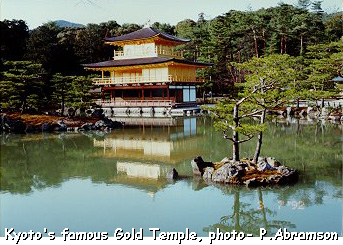- Tradition, Honor, Patriotism-

小野田 寛郎 • Lieutenant Hiroo Onoda
- Tradition, Honor, Patriotism-

小野田 寛郎 • Lieutenant Hiroo Onoda
Several small groups of Japanese soldiers had continued fighting long after the end of World War Two, unwilling or unable to believe that Japan could have actually given up the fight. Surrender was never an option. In fact only a year before Onoda's return to Japan another soldier, Sgt. Shoichi Yokoi, in a completely separate event in 1972, had ceased fighting on Guam. Through the late 1940's, '50's on through to the mid-1970's occasional stories would surface in the media commenting on this cultural phenomenon.
Hiroo Onoda (from Wakayama Prefecture) graduated in 1939, and at age17 went to central China (under partial Japanese control then), to work for a lacquerware trading company. He was soon given responsibilities as a regional buyer, driving a fancy 1936 Studebaker, and learning how to charm the women in a nearby French dance hall.
In May 1942 (5 months after Pearl Harbor) Onoda was drafted and ordered to report for military duty in December. He was ecstatic, cabling his family back home with the words, "Class A Banzai!" After several months in the infantry and seeing action in the field (back in China) he was selected for officer training. The commander was harsh but taught Onoda strict military discipline. By August 1944 when Onoda finally graduated the war was going badly for Japan. Few Japanese knew just how badly though. Onoda was proud to complete his officer's training and found himself swiftly transferred to a secret intelligence school in Nakano. Food was in short supply as his class rushed through long hours of intensive study, 230 in one cramped classroom and barracks. They were taught sabotage, spying techniques, disinformation - any action could be condoned if the end result was to advance their cause.
In - Lt. Onoda's autobiography, "NO SURRENDER: My Thirty-YearWar", 1974, by Kodansha Intl., Ltd., he states that by the Fall of 1944 his class had been informed that the U.S. was hard at work developing the atomic bomb. Japan was building one too he was told, but America was much further along - from the rumors and reports he was privy to.
In November his class was hastily disbanded and Lt. Onoda was ordered to go to a small island in the south of the Philippines. He was given charge of a small band of guerrillas believing that death was not to be feared, since then he'd be enshrined as a god at Japan's Yasukuni Shrine, and people would worship him.
Soon the waters surrounding the 6 mile by 18 mile wide mountainous island of Lubang were literally filled with hundreds of enemy ships of all kinds. U.S. fighters and bombers flew over practically unopposed. Japanese military command and supply lines were disrupted. They were soon low on food, and discipline within the ranks was breaking down. Lt. Onoda and his men retreated into the mountains to carry out the guerilla operations which he had been trained for.
Allied forces swept over the island then continued on. Many Japanese kept fighting or died in suicide attacks against the overwhelming enemy forces. Onoda had been trained to survive. And he understood disinformation well enough. Therefore it came as no surprise to him when, in the Fall of 1945 (following the end of the Pacific War, a.k.a. WWII) the Americans were dropping leaflets in Japanese urging them: "The war ended on August 15. Come down from the mountains!" The various groups of soldiers conferred but soon decided to reject this obvious trick. Japan would never surrender, they decided.
Over the next few years most of the hold-outs were either killed by American and Philippine patrols or walked down out of the mountains on their own accord. In the minds of Lt. Onoda and 2 other men a secret, highly sophisticated war was still being waged. They discussed it at length. They learned how to cure and store foods, how to sew new uniforms and how to move between various camps in the mountains without being detected.
Many times search parties (including Onoda's relatives) tried to coax them out. But each time, his band recognized the error or purposefully concocted deceit. There were occasional raids of the island's farmers, and gun maintenance in the jungle was of vital importance. Onoda kept a calendar (which was only 6 days off, after 30 years!), stored ammo, and was wary of scorpions, centipedes, snakes, and stinging ants. The 3 men became accustomed to a hard way of life.
By 1974 Lt. Onoda was alone. One day he approached an intrepid Japanese young man - who was very surprised to meet the mythical "Onoda-san". Soon Onoda returned to Japan as a long lost hero, who had fought bravely. Before leaving the Philippines he was given an audience with President Marcos. The Japanese media followed his miraculous return closely.
Hiroo Onoda remained loyal and determined in his cause. He was in the hot glare of the media for a time after returning to Japan, soon dictated over 2000 pages, detailing his experiences, and later bought a ranch in South America, where he lived for several years. (by Paul Abramson)
Later in life, Hiroo Onoda returned from Brazil, and he headed a children's nature school in northern Japan. He has remained famous in Japan, a man who fought for his country with honor.
Mr. Hiroo Onoda passed away at age 91, in January 2014.
Send comments to: paul@zzz.com
Go To Main Page: http://www.paulzilla.org/